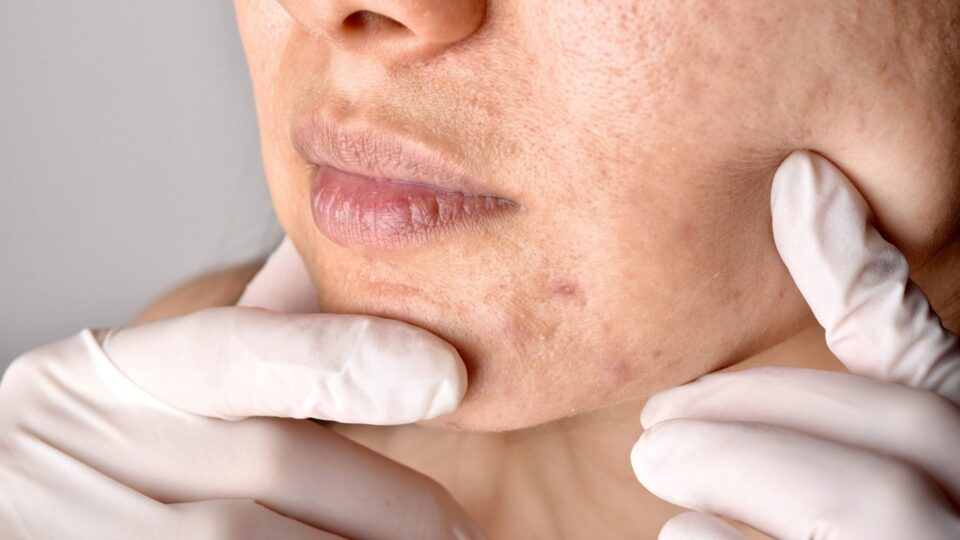Acne scars are an unfortunate and persistent consequence of acne breakouts. These scars often occur when inflammation from acne blemishes disrupts the skin’s healing process. The outcome of scarring largely depends on the collagen production in one’s body; too little collagen results in depressed or pitted scars, while an excess causes raised scars to form American Academy of Dermatology. Understanding what causes acne scars and the various types that can result is crucial for determining the most effective treatment options.
There are several types of acne scars, including ice pick, boxcar, rolling, and hypertrophic or keloid scars Healthline. Each of these types arises from different severities of acne and presents unique challenges for treatment. One such treatment is the use of a pico laser, a cutting-edge technology that pulses energy into the skin to break up scar tissue and stimulate collagen production. This advanced laser therapy has shown promising results in reducing the appearance of acne scars, helping individuals regain confidence in their skin.
Types of Acne Scars
Acne scars can be categorized into a few main types, including atrophic, hypertrophic, keloid scars, and post-inflammatory hyperpigmentation.
Atrophic scars are the result of a loss of tissue, and there are three main subtypes: ice pick, boxcar, and rolling.
Ice pick scars are deep and narrow, giving them the appearance of punctures in the skin.
Boxcar scars have a more defined, box-like shape with steep edges. They can vary in depth and usually appear on the cheeks and temples.
Rolling scars have a wavy, uneven texture and are typically the result of long-term inflammatory acne.
Hypertrophic scars occur when excess collagen is produced during the skin’s healing process. They are raised, thick, and firm, but generally remain confined to the original acne region. Hypertrophic scars are more commonly found on the chest and back.
Similar to hypertrophic scars, keloid scars also form due to excess collagen production. However, keloid scars grow beyond the original acne region, appearing as red or purple, raised, and sometimes painful. They often develop on the chest, shoulders, and jawline.
Post-Inflammatory Hyperpigmentation
Post-inflammatory hyperpigmentation is not a true scar, but it is a common after-effect of acne. It appears as dark spots or patches that occur due to increased melanin production during the inflammation of acne. These marks can fade over time, but in some cases, they may persist seemingly permanently.
In recent years, pico laser treatments have gained popularity for their ability to address various types of acne scars. Pico laser for acne scars work by delivering ultra-short, high-power laser pulses to the skin, stimulating collagen production and breaking up scar tissue. As a result, pico laser treatments can help improve the appearance of atrophic, hypertrophic, and keloid scars, as well as post-inflammatory hyperpigmentation.
Professional Acne Scar Treatments
Dermabrasion
Dermabrasion is a process that involves the removal of the outer layers of the skin, typically with a rotating instrument. This treatment can help to reduce the appearance of raised acne scars and create a smoother skin texture. A professional skin specialist or dermatologist usually performs dermabrasion treatments, and it may require multiple sessions for the best results.
Pico Laser for Acne Scars
Pico laser is an innovative treatment option for acne scars. This non-invasive procedure uses ultra-short laser pulses to break down scar tissue and stimulate collagen production within the skin. This process helps to reduce the appearance of both raised and depressed acne scars, promoting smoother and more even skin texture. By targeting the underlying causes of acne scars, pico laser for acne scars can be an effective and safe treatment option for individuals seeking to improve their skin’s appearance.
Microneedling
Microneedling is a procedure that uses tiny needles to create controlled micro-injuries in the skin. This process helps stimulate collagen production and promote healing, reducing the appearance of acne scars. A professional skin care specialist generally conducts microneedling, and multiple sessions may be necessary for optimal results.

